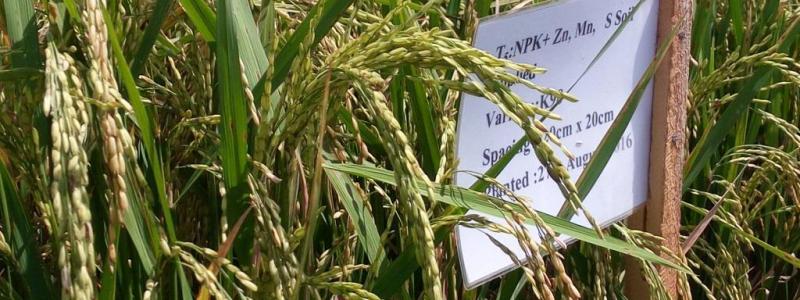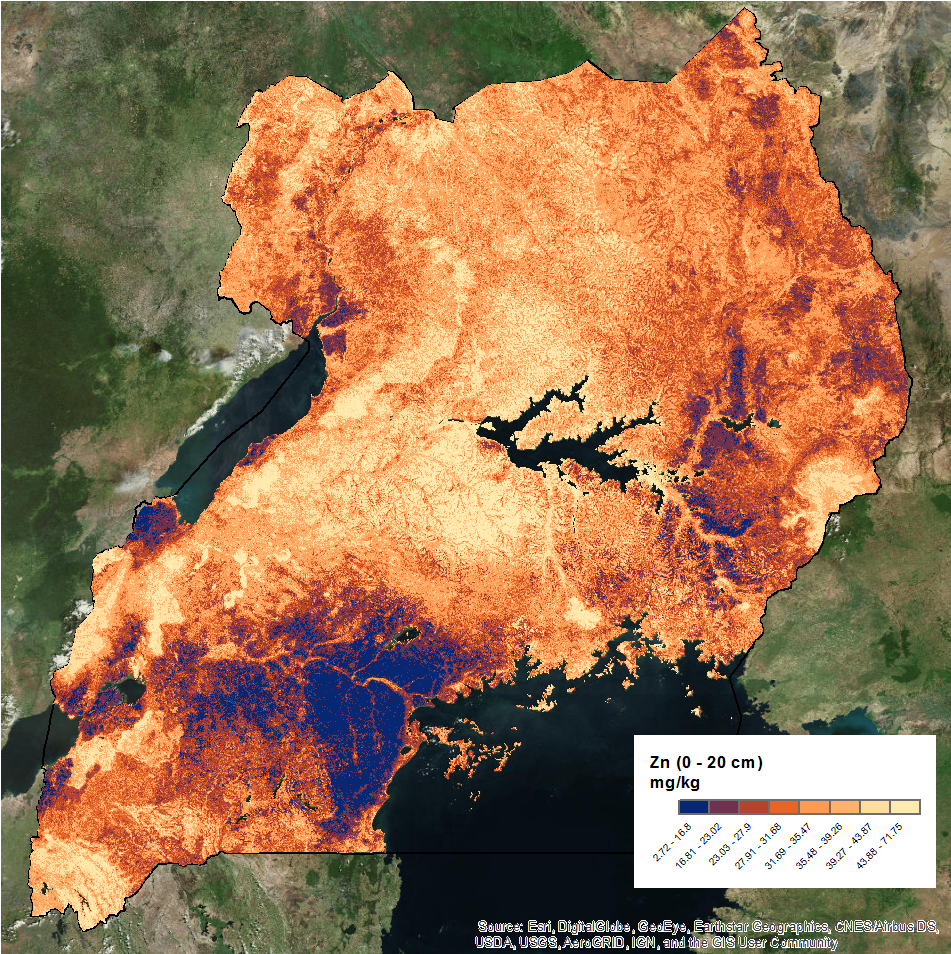
Background
Rice is an important food staple and a major source of income for many Ugandans. About 80% of rice farmers in Uganda are small scale; farm less than 2 hectares; use traditional tools and inputs; apply no fertilizer; and, practice little or no irrigation and poor water management. Together with declining soil fertility and poor socio-economic conditions, yields remain low at 1.5-2.5 t/ha. Annual rice consumption is estimated at 169,000 MT against domestic production of 106,700 MT with the deficit filled by imports. The Government has prioritized rice as a strategic commodity for development and to meet local food security demands by increasing production to 680,000 MT by 2018.
Rationale
Recent on farm surveys revealed that Ugandan farmers use virtually no fertilizers on rice and yet for each ton of grain yield 15 - 20 kg N is required. This has led to increasing severe annual nutrient depletion, estimated at 72, 23 and 43 kg per hectare of N, P and K, respectively. Over 80% of farmers interviewed perceived soil nutrient depletion to be responsible for decreased rice yields. Symptoms of nitrogen and phosphorus deficiencies are common and low mineral ions especially nitrogen, phosphorus, sulphur, iron and, low pH are among the major limiting factors. Fertilizer application increases yields of lowland and upland rice from 0.8 to 1.5 t/ha and 1.5 to 2.5t/ha respectively, while yield potentials are 8t/ha and 5/ha. Other researchers have reported yield increases from 2.1 to 5.2 t/ha. Little is known about micronutrient fertilization on rice in Uganda. Elsewhere in East Africa, on-farm trials have revealed robust yield responses with the addition of micronutrients to NPK fertilizers in all soils and crops. Sulphur, zinc, copper, magnesium, calcium, boron, iron and manganese as multiple, rather than individual micronutrients increased yield by 20%-70% over the yields realized when NPK are applied alone on maize, wheat, rice, bean, and potato in Ethiopia, Rwanda, Burundi and Mozambique. Micronutrients enhance the uptake efficiency of NPK fertilizers improving profit margins, increasing grain nutritional quality and improving plants’ ability to tolerate diseases. These findings indicate opportunities for research to develop innovative measures to integrate and apply both macro- and micronutrient fertilizers to boost rice yields in Uganda.
Objectives
Appropriate smart fertilizer (SmartFert) practices have to be identified and demonstrated to raise farmers’ awareness for before they will use them. Micronutrients applied through leaves rather than soil have higher uptake efficiencies. No such information exists for Uganda. This project will address these gaps and aims to identify and promote best combinations of micronutrients and NPK fertilizers and suitable application method for increased lowland rice yields.
The goal of this project is to increase food security and income of smallholder farmers producing lowland rice with the main objective to significantly increase the productivity of lowland rice in Eastern and Northern Uganda. Specific objectives are:
1. Understand the current situation and rice fertility challenges in the region.
2. Evaluate and identify the appropriate composition and mode of application of micronutrients (SmartFert) for optimum yield of lowland rice.
3. Integrate and outscale SmartFert into ongoing development programs and production practices, and support institutional and research capacity for rice sector development.
Consortium
Africa Innoviations Institute (lead), Wageningen University, IFDC, ISRIC – World Soil Information, AfricaRice, FICA seeds, WindWood Millers Ltd.
Funding
NWO-WOTRO Science for Global Development
Outcomes
ISRIC developed a set of 15 soil nutrient maps using machine learning methods that combined sample data made available through the Vital Signs project and a suite of satellite imagery and digital elevation data. These maps show the spatial distribution of soil nutrient contents at high spatial resolution and can help to identify areas with nutrient deficiencies. The example below shows the available Zn content.
